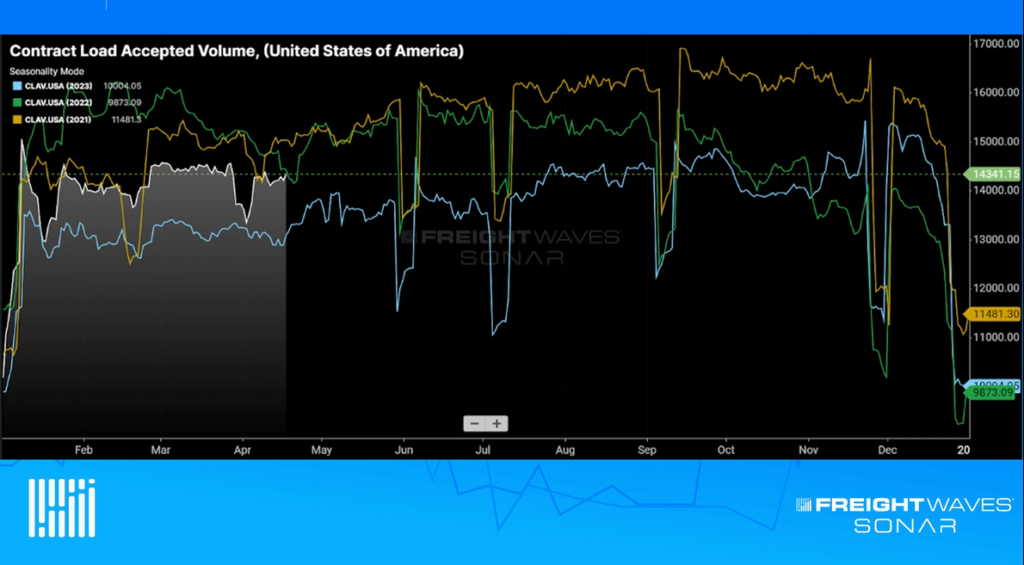Brokers are faced with a wide range of challenges every day. Many of these tough situations arise from a lack of market visibility, including uncertainty surrounding the bidding process, inability to analyze trucking capacity and a general lack of advanced technology to manage daily workflows.
When brokers lack access to the insights necessary to understand capacity trends in real time, they are not able to price freight in accordance with real-world market conditions. This can lead to overpricing or underpricing freight, both of which ultimately threaten a broker’s efficiency and profitability.
Additionally, without a high level of market visibility, brokers are less prepared to respond to customer needs. This can lead to lower customer satisfaction scores, strained relationships and lost business.
For brokers, the stakes are simply too high to rely on subpar insights and historical norms when making decisions in today’s volatile freight environment.
With near-time and real-time data, it is possible to ascertain what is happening in the freight market today — and what will be happening tomorrow. Brokers can access that crucial information through a variety of high-frequency metrics housed in FreightWaves SONAR, including up-to-date freight rates.
At the highest level, brokers can secure more loads, increase their margins and uncover new revenue opportunities by utilizing the cutting-edge tools and indices — including tender data and general market insights — available in SONAR.
At a more granular level, SONAR offers specific insights for the benefit of different groups within a single brokerage. For example, customer service and carrier sales teams can rely on Lane Signal to power quicker, more accurate spot quoting. Pricing departments, on the other hand, may rely more heavily on Lane Scorecard to identify which lanes offer the greatest opportunities to capture revenue.
Regardless of job title or department, all SONAR users also benefit from the expertly delivered insights available via FreightWaves Passport and Market Outlooks. These resources allow users to dive deep into current and upcoming market and economic shifts in order to stay ahead of the curve.
Ultimately, when brokers tap into all of the features that SONAR has to offer, a whole new — and more profitable — world opens up to them.
“Freight brokerages are more likely to secure more bookings, be better able to manage their businesses, ensure freight can be fully tendered and accepted with a lower rejection risk, and gain more respect as a market leader,” according to SONAR’s Broker Use Case. “It is the ultimate win-win.”
Click here to dive deeper into the ways that brokers can utilize SONAR to improve their businesses.











